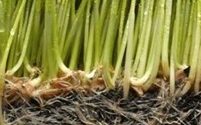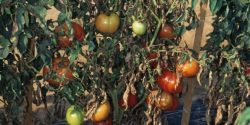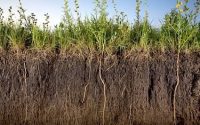If you’re in agriculture (or horticulture or silviculture …) you are concerned with plants. Depending on your agricultural perspective, any particular plant might be a cash crop, a feedstock, a windbreak, water break, or a weed. Your soils and your equipment should and do occupy a lot of your thinking, but in the end it is the health, quantity, quality of the plant you produce that allows you to “farm again next year”. Of course, marketing and finance have a place as well – but if you don’t have anything to market, financing gets a lot more difficult!
Plants
Plants
Under Construction - Read at your own risk!

Seeds - The New Plant
The seed of a plant is a marvel of creation. Every instruction that the mature plant needs to begin life, grow through plenty and adversity, and mature and make fruit is contained in that seed – no matter how small.
Learn More >
Draft

Roots - Plants Below the Ground
Out of sight, out of mind : so goes the saying. For the plant grower though it better not be true, at least in the case of roots.
Learn More >
Draft

Tops - Plants Above the Ground
The above ground portion of the plant is the energy production dynamo for the entire system. When germination begins, a seed must quickly send up a stem and leaf above the surface of the ground before its stored energy runs out. As soon as the cotyledon unfolds, photosynthesis begins and energy is sent throughout the system.
Learn More >
Draft

Plant Testing
Plant Testing (properly done) can give a grower important information about a plant’s health, its nutrient needs, and the flow of nutrients for future growth.
There are many different opinions on how often to test your plants and how to go about it. We believe that regular plant testing can can yield enough information to justify its cost on certain high value crops. The amount of testing justified depends on a number of factors. We have accumulated some resources that we think will help in that evaluation…
Learn More
Draft

Plant Physiology -
Nutrient Flow and Growth
The complexity of life continuously amazes and surprises the careful observer. Nutrient and energy capture, distribution of resources, balancing of growth areas, response to environmental stimulation – these are all going on simultaneously and continuously in even the simplest plant.
Draft

Plant Pathology -
Infection and Disease
Life is amazing and adaptive. Physical life is also recycled. Death for one organism often means another organism thrives. The study of plant pathology helps us to know how to intervene on the side of the “good guys” (our crops). It may even help us to know when not to intervene. And if we’re really lucky it will ultimately guide us in understanding how to nourish a system where our active intervention is minimized while our results are maximized and consistent.
Draft

Mycorhizzal Associations
The term Mycorrhizae refers to the symbiotic association between a living plant and a beneficial fungus (usually basidiomycete). This association is common in naturally vegetated, undisturbed areas, especially forests. Different plant species have the ability to associate with differing species of fungi to form associations.
Mycorrhizal associations are important to plant life world wide, but have only recently been commercialized for crops and ground covers.
Draft

Plant Signaling -
Hormones, Steroids and More
How does the root know it is supposed to grow? How does the bud know when to blossom? How do the stems know whether to elongate or branch? Welcome to the wonderful world of plant signalling.
